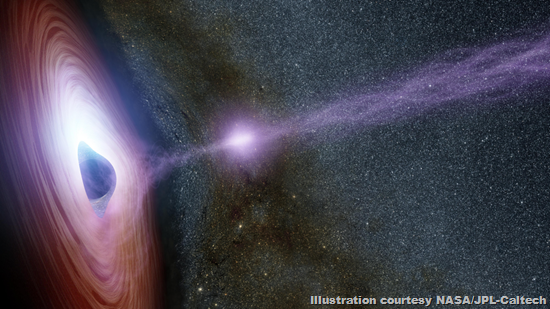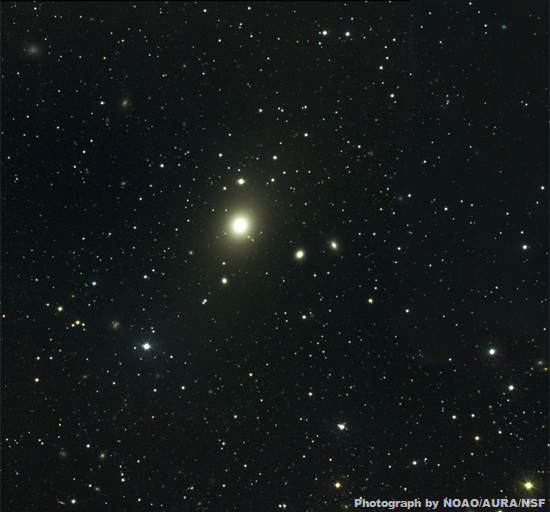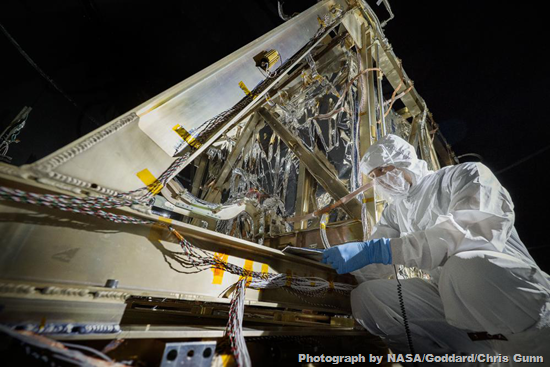
Week's Best Space Pictures: Stars Kiss and Black Holes Flash
By Michael Greshko, National Geographic News, 30 October 2015.
By Michael Greshko, National Geographic News, 30 October 2015.
Feed your need for heavenly views of the universe with our pick of the most awe-inspiring space pictures. This week, a snake of plasma slithers across the Sun, NASA scientists prep for the cold, and the early universe’s chemistry gets a close-up.
1. In a Flash
An artist’s impression of Mrk 335, a supermassive black hole that produces X-ray flares. A recent study suggests that it flashes because of the collapse of its corona, a shroud of high-energy particles that surrounds black holes.
2. Caked Alaska
NASA’s Terra satellite snaps a photo of a wintry Alaska on October 16, 2015. Point Barrow, the northernmost location in the U.S., is visible near the top of the image. The Brooks Range, a northern extension of the Rocky Mountains, spans the south.
3. Stirred Well
A visible-light photo of the Virgo galaxy cluster. A recent X-ray survey of the cluster revealed that the elements necessary for stars, planets, and life were evenly distributed across the universe more than 10 billion years ago.
4. Cooler Than Cool
NASA engineer Chris Gunn conducts inspections before the final super cold test for the James Webb Space Telescope (JWST). When it launches in 2018, the JWST will operate in space at -387 degrees Fahrenheit, colder than liquid nitrogen.
5. Early Risers
A Hubble Space Telescope photo of the MAS0717 galaxy cluster. Astronomers recently examined MAS0717 and two other clusters and found 252 tiny galaxies that existed less than 900 million years after the Big Bang.
6. After the Storm
The southeastern U.S., as imaged by NASA-NOAA’s Suomi NPP satellite. Heavy rains swamped the region in October, and the run-off carried sediment and other materials into coastal waters - seen here as the colourful swirls near the coast.
7. Star-Crossed Lovers
An artist’s impression of VFTS 352, the hottest, most massive binary system ever found with two touching stars. In the end, the kissing stars will either merge into a single giant star or form a pair of black holes.
8. Solar Serpent
NASA’s Solar Dynamics Observatory captures a massive filament of plasma snaking above the Sun’s surface, tethered in place by magnetic forces. The filament appears dark in extreme ultraviolet light, as the Sun is imaged here.








thank's give us this information.
ReplyDeletehttps://freenewsoftzone.blogspot.com/